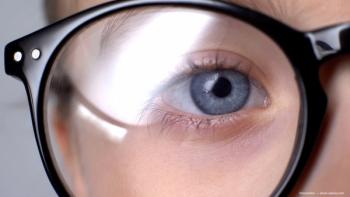
Why IOL power selection requires ‘different’ thinking
While the accuracy of IOL power selection has advanced since the early days of phacoemulsification, the selection of the proper IOL power is always in the background when a surgeon performs cataract surgery, Dr. Hill said.
Las Vegas-It is anticipated more than 3.7 million cataract surgeries were performed in the United States in 2015, 98% of them by means of phacoemulsification.
“Of the additional 20.3 million cataracts done in other countries, 64% of them (were) by phacoemulsification,” said Warren Hill, MD. “I can think of very few technologies in our field that have this kind of longevity, and the life of Dr. (Charles) Kelman is a wonderful example of what is possible when we think ‘different.’ ”
Dr. Hill, in private practice at East Valley Ophthalmology, Mesa, AZ, presented the Charles D. Kelman Lecture entitled, “IOL Power Selection: Think Different” at the 2015 meeting of the American Academy of Ophthalmology.
While the accuracy of IOL power selection has advanced since the early days of phacoemulsification, the selection of the proper IOL power is always in the background when a surgeon performs cataract surgery, Dr. Hill said.
He added that the continued emphasis on improving outcomes is to increase patient safety and reduce the many burdens associated with a refractive surprise.
“If a patient ends up -4D, it’s an annoyance for us, but (it) can be a life-changing event for the patient,” Dr. Hill said.
Improving calculations
Even with the most advanced metrics and the use of multiple theoretical formulas, there can still be problems with the selection of IOL power, Dr. Hill pointed out.
The simple fact is that surgeons don’t get the IOL calculations right all the time. Refractive targets within 1 D are usually achieved, but the discrepancy between what was expected and what is reached for a ±0.50 D accuracy remains problematic.
For more than a decade, Dr. Hill has reviewed physician databases for lens constant optimization from surgeons around the world, totaling more than 260,000 optical biometry cases.
Each physician submits between 200 and 300 cases, which typically represents their best work.
What Dr. Hill has found is that fewer than 1% of surgeons have a refractive accuracy of 92% or better within ±0.5 D.
“Six percent reach that level of accuracy 84% of the time, and the vast majority reach that level of accuracy only 78% of the time,” Dr. Hill said. “If we’re in the business of putting in lens-based refractive IOLs, this is probably not good enough.”
The “mathematical backbone” of all theoretical formulas is basically the same: Lens vergence equals image vergence minus object vergence.
“The recurring difficulty with this approach is the power of the IOL inside the eye is relative and not absolute,” Dr. Hill said. “Inside the eye, a 21 D lens only acts as a 21 D lens a certain distance from the cornea.”
Place it a bit more anterior or posterior and the lens will have a different relative power. That distance is commonly referred to as the “effective lens position” (ELP) of an IOL. This represents the “significant part” of the accuracy of any theoretical formula calculations.
“Theoretical formulas have to first estimate the position of the IOL inside the eye before performing the rest of the calculation,” Dr. Hill added. “And with regrets, the effective lens position is an unknowable quantity-something that can only be estimated and not directly measured.”
So, ophthalmologists are faced with the problem that preoperative measurements and the actual postoperative ELP are not always correlated. Using that same 21 D example, “a 0.5-mm mis-estimation of the ELP is a 1 D error at the plane of the capsular bag.”
“Try holding your fingers 0.50 mm apart and it’s easy to see how sensitive all of this can be,” Dr. Hill pointed out. “The ELP remains a major limiting factor for all theoretical formulas.”
Changing calculations
Almost 20 years ago, Gerald Clarke, MD, an ophthalmologist in Wisconsin, showed that by using a completely different approach for IOL power selection, the accuracy could be improved by more than 80% over a conventional theoretical formula of the day–and this was before optical biometry and sophisticated keratometry were introduced, Dr. Hill said.
“But we in ophthalmology overlooked this,” Dr. Hill explained. “That paper should have been a wake-up call, but it did not gain the attention it should have. Like many good ideas, looking back it was a wonderful idea, but way ahead of its time.”
However, Dr. Clark’s insights did lay the groundwork for a closer look at the concept of adaptive learning, by which a method for IOL power selection can be developed that is based solely on data and independent of what was previously known, Dr. Hill explained.
“Such a method is well suited to the task of pattern recognition and complex nonlinear relationships,” he added.
With the sophisticated mathematical tools currently available, surgeons have the ability to think about lens calculations “as a pattern,” Dr. Hill said. “For any axial length, anterior chamber depth, central corneal power and IOL power producing a given post-operative spherical equivalent, we can approach this as a pattern.”
Dr. Hill showed an example in which 1,000 seemingly random points were placed within a box, although these points were not actually random, but were created using a “Manhattan distance” generator. In layman’s terms, imagine the city blocks of Manhattan as little squares.
Using a concept of feature extraction and feature matching, Dr. Hill showed how a neural network was able to begin with “a seemingly chaotic collection of points and demonstrate that it actually has a pattern. The neural network was able to establish this and create a self-organizing map,” Dr. Hill said.
Improvement upon the original neural network concept from the 1940s is a different mathematical model known as a radial basis function. Dr. Hill said it handles nonlinear relationships and it “does the best with the fewest amount of necessary inputs, which means it thinks for itself. And for the task of IOL power selection, this sophisticated form of data interpretation becomes an enormously powerful tool.”
While the terminology is novel for most ophthalmologists, the use of the radial basis function model is not. It is used for fingerprint recognition, in the automotive industry to calibrate engines, in facial recognition software by law enforcement agencies, and for EKG interpretation.
Dr. Hill, his team of physician investigators, and the mathematicians and engineers at MathWorks developed a study protocol to evaluate the data to determine the best measurement parameters (factors) to be used. Axial length, central corneal power, and anterior chamber depth were deemed the most important factors.
“Developing this, we didn’t want to have something encumbered by too much data,” Dr. Hill said. “In this case, the more variables we used, the less accurate the IOL power selection method became.”
The new paradigm
Realizing all formulas have limitations, “the difference between conventional formulas and RBF pattern recognition is that there is no calculation bias,” Dr. Hill explained. “The RBF method does not know that a 21-mm eye is very short or that a 28-mm eye is very long eye. All it knows is a pattern of data produces a particular result.”
This new IOL power selection method also incorporates a feature commonly employed in engineering, but new to ophthalmology, known as a “boundary model.”
One of the more powerful features of pattern recognition, based in artificial intelligence, is that the limits, or “boundary,” of calculation accuracy can be identified. Within such a boundary, surgeons can anticipate a predicted accuracy and outside of which they may not have enough data to for accurate interpolation.
When using the RBF calculator, an IOL power is identified as being “In Bounds,” or “Out of Bounds.” The implications of this added level of security are significant and are meant to enhance patient safety and physician confidence. With conventional theoretical formulas, data is entered and the user hopes for the best.
The RBF model is a “big data” exercise, Dr. Hill explained. When the dataset used to fit the RBF model was expanded from 681 cases to 3,445 Lenstar cases, the depth of calculation accuracy dramatically improved. For the boundary model of axial length versus ACD, across an enormous range of values, the RBF model was unable to resolve the question in only 12 cases.
For retrospective testing, looking at 3,212 independent cases from 13 surgeons in eight countries, the outcomes have been impressive with a weighted mean ±0.50 D accuracy of 95%.
“No one’s ever seen numbers like this,” Dr. Hill said.
What is even more impressive than the accuracy is the consistency from one beta test site to the next across Europe, the Middle East, Africa, North and South America, Asia, India, and Australia. This level of consistency reveals that the outcomes are technologically driven.
“In summary, this is a new approach based on pattern-recognition, data interpolation, and a validating boundary model, but just adds an additional level of confidence, and the accuracy of this methodology is due to an increase in flexibility,” Dr. Hill said. “The RBF calculation method will soon be incorporated into the Haag-Streit Lenstar EyeSuite software.”
A free, web-based, online version of this calculator is expected to be functional on the American Society of Cataract and Refractive Surgery website and at RBFCalculator.com by April or May 2016.
Warren Hill, MD
Dr. Hill is a consultant for Alcon Laboratories and Haag-Streit.
Newsletter
Don’t miss out—get Ophthalmology Times updates on the latest clinical advancements and expert interviews, straight to your inbox.



















































.png)


